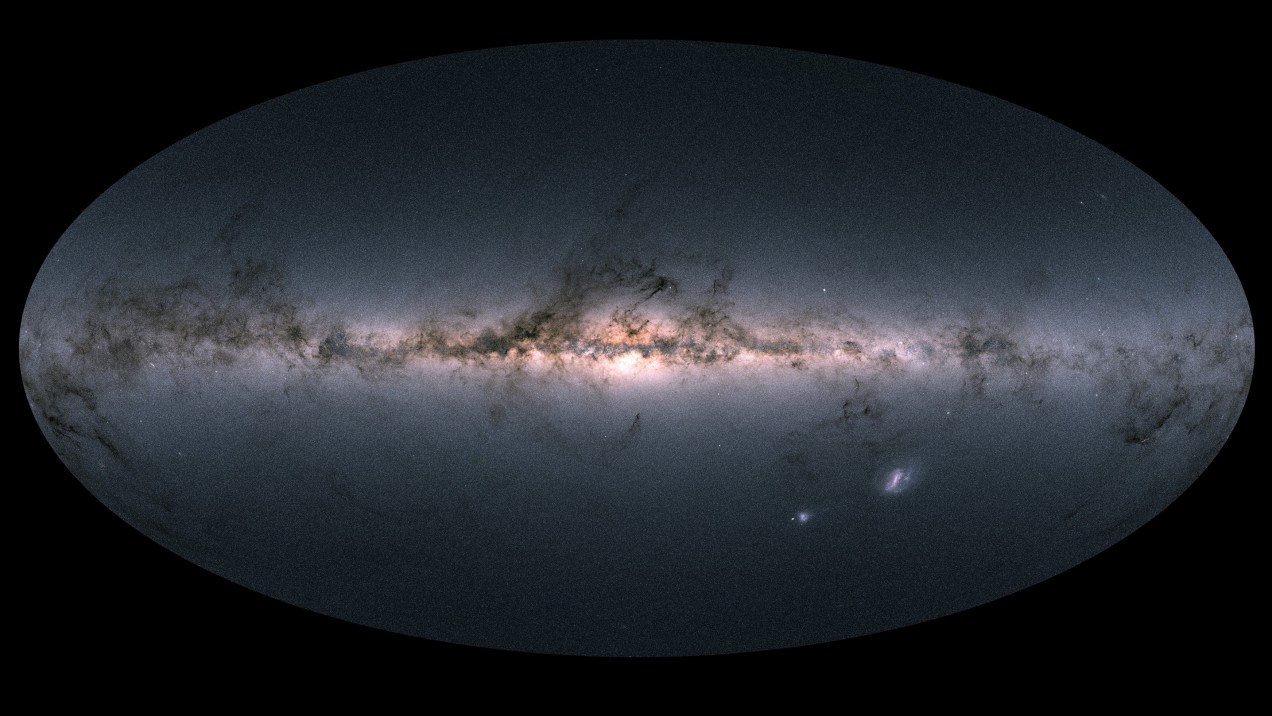


During the 1970s, NASA launched four of the most important spacecraft ever built. When Pioneer 10 began its journey to Jupiter, astronomers did not even know whether it was possible to pass through the asteroid belt unharmed. Only after it emerged safe was Pioneer 11 sent on its way.
Both sent back the first close-up pictures of Jupiter, with Pioneer 11 continuing to Saturn. Voyager 1 and 2 later took even more detailed measurements, and extended the exploration of the solar system to Uranus and Neptune.
All four of these spacecraft are now on their way out of the solar system, heading into interstellar space at a rate of about 10 kilometers per second. They will travel about a parsec (3.26 light-years) every 100,000 years, and that raises an important question: What stars will they encounter next?
This is harder to answer than it seems. Stars are not stationary but moving rapidly through interstellar space. Without knowing their precise velocity, it’s impossible to say which ones our interstellar travelers are on course to meet.
Enter Coryn Bailer-Jones at the Max Planck Institute for Astronomy in Germany and Davide Farnocchia at the Jet Propulsion Laboratory in Pasadena, California. These guys have performed this calculation using a new 3D map of star positions and velocities throughout the Milky Way.
This has allowed them to work out for the first time which stars the spacecraft will rendezvous with in the coming millennia. “The closest encounters for all spacecraft take place at separations between 0.2 and 0.5 parsecs within the next million years,” they say.
Their results were made possible by the observations of a space telescope called Gaia. Since 2014, Gaia has sat some 1.5 million from Earth recording the position of 1 billion stars, planets, comets, asteroids, quasars, and so on. At the same time, it has been measuring the velocities of the brightest 150 million of these objects.
The result is a three-dimensional map of the Milky Way and the way astronomical objects within it are moving. It is the latest incarnation of this map, Gaia Data Release 2 or GDR2, that Bailer-Jones and Farnocchia have used for their calculations.
The map makes it possible to project the future positions of stars in our neighborhood and to compare them with the future positions of the Pioneer and Voyager spacecraft, calculated using their last known positions and velocities.
This information yields a list of stars that the spacecraft will encounter in the coming millennia. Bailer-Jones and Farnocchia define a close encounter as flying within 0.2 or 0.3 parsecs.
The first spacecraft to encounter another star will be Pioneer 10 in 90,000 years. It will approach the orange-red star HIP 117795 in the constellation of Cassiopeia at a distance of 0.231 parsecs. Then, in 303,000 years, Voyager 1 will pass a star called TYC 3135-52-1 at a distance of 0.3 parsecs. And in 900,000 years, Pioneer 11 will pass a star called TYC 992-192-1 at a distance of 0.245 parsecs.
These fly-bys are all at a distance of less than one light-year and in some cases might even graze the orbits of the stars’ most distant comets.
Voyager 2 is destined for a more lonely future. According to the team’s calculations, it will never come within 0.3 parsecs of another star in the next 5 million years, although it is predicted to come within 0.6 parsecs of a star called Ross 248 in the constellation Andromeda in 42,000 years.
These interstellar explorers will eventually collide with or be captured by other stars. It’s not possible yet to say which ones these will be, but Bailer-Jones and Farnocchia have an idea of the time involved. “The timescale for the collision of a spacecraft with a star is of order 10^20 years, so the spacecraft have a long future ahead of them,” they conclude.
The Pioneer and Voyager spacecraft will soon be joined by another interstellar traveler. The New Horizons spacecraft that flew past Pluto in 2015 is heading out of the solar system but may yet execute a maneuver so that it intercepts a Kuiper Belt object on its way.
After that last course correction takes place, Bailer-Jones and Farnocchia will be able to work out its final destination.
Ref: arxiv.org/abs/1912.03503 : Future stellar flybys of the Voyager and Pioneer spacecraft